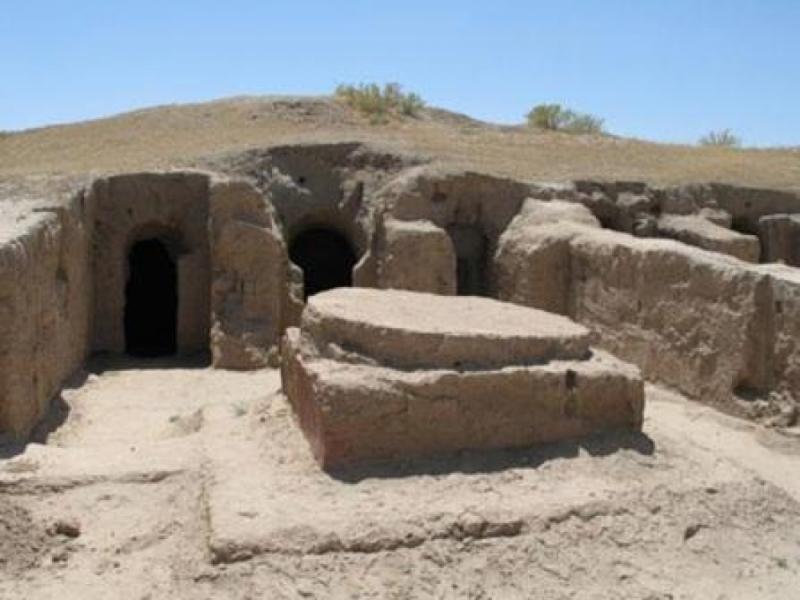Buddhist temple in Termez-Karatepa
Karatepa is a Buddhist place of worship built on three hills situated in the north-west part of Old Termez. It includes a number of temples and monasteries that appeared in the beginning of the 2nd century A.D. The architecture of Karatepa is characterized by a combination of caves cut in quaternary sandstone, and surface buildings made of pahsa and unbaked brick. Interiors of the shrines were decorated with topical and ornamental paintings on stucco plaster and sculptures made of loess and clay. In the architectural decor marble-like limestone and carved stucco were widely used.
The Karatepa center achieved the peak of flourishing in the 2nd-3rd centuries. In 4th-5th centuries a considerable part of the shrines stopped functioning. During that period caves were used as burial places, and entranceways were usually bricked up. However, it is highly probable that some shrines, or at least their surface parts continued to exist as Buddhist places of worship till the 6th century. It is unknown whether some Buddhist Monasteries were destroyed by the Arabs. However, to get rid of the heathen's temples in Central Asia, the Arabs used a practice of levying special taxies on non-Moslim cult objects still in existence. This probably put an end to the function of Buddhist monuments in Termez and its surrounding area. Most likely, the monks living in the Buddhist monasteries of Termez moved to the region of Kashmir, where at that time the dynasty of the Karkots ruled and who were active supporters of Buddhism.
In VIII- IX centuries the majority of Tokharstan's population adopted the new religion that was brought by the Arabs. One of the causes of that non-Moslims had to pay huge taxes on territories. In the 9th-12th centuries hermits called “sufi” settled in semi-destroyed caves.
The walls of Karatepa caves still carry numerous graffiti drawings and visitors inscriptions (Bactrian, Middle Persian, Brahmi, Soghdian, Syrian, Arabic), made both when the Buddhist center was functioning and in the period of its decline when caves were still accessible.
*Tourists interested in visiting Karatepa need to obtain a special permit from the National Company Uzbektourism, as Karatepa is located on the territory of the border patrol base.
Source: http://www.advantour.com/uzbekistan/termez/kara-tepa.htm


